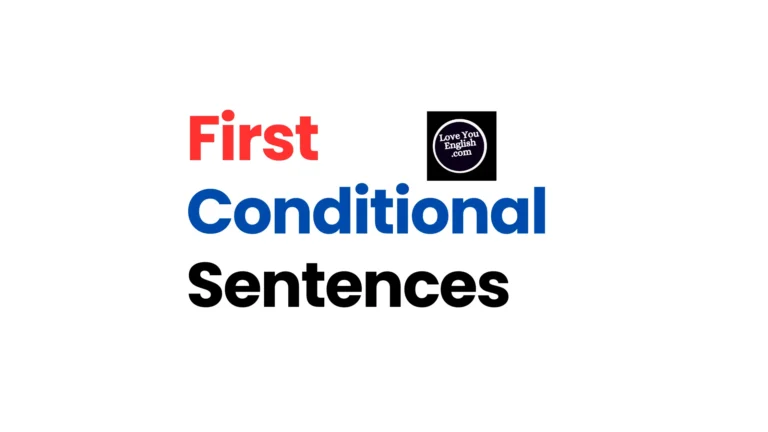How Can Beginners Start Learning English Grammar?
Learning English grammar can seem tricky at first, especially for beginners, but it doesn’t have to be overwhelming.
Grammar is the backbone of any language. It helps us form clear and meaningful sentences.
In this blog post, I’ll break down the process of learning English grammar in a way that’s easy to follow.
Whether you are learning English for work, school, or just for fun, understanding the basic grammar rules will improve your ability to communicate effectively.
Let’s dive into the best tips and strategies to help beginners master English grammar.
1. Start with the Basics
If you are just beginning your English grammar journey, it’s important to start with the basics. These include understanding how sentences are formed, the roles of words in a sentence, and how to structure simple sentences.
What is a sentence? A sentence is a group of words that express a complete thought. For example:
Each sentence has two main parts: the subject and the predicate.
- Subject: The subject tells us who or what the sentence is about. In the sentence “I like English,” “I” is the subject.
- Predicate: The predicate tells us what the subject does. In the sentence “She is reading a book,” “is reading a book” is the predicate.
2. Learn Parts of Speech
English grammar is built around eight main parts of speech. Understanding each part of speech is key to forming sentences correctly.
- Nouns: Nouns are names of people, places, things, or ideas. Examples: dog, teacher, city.
- Pronouns: Pronouns replace nouns in sentences. Examples: he, she, it, they.
- Verbs: Verbs show actions or states of being. Examples: run, eat, is, are.
- Adjectives: Adjectives describe nouns. Examples: beautiful, tall, happy.
- Adverbs: Adverbs describe verbs, adjectives, or other adverbs. Examples: quickly, very, well.
- Prepositions: Prepositions show the relationship between a noun (or pronoun) and another word in the sentence. Examples: in, on, at, under.
- Conjunctions: Conjunctions connect words, phrases, or clauses. Examples: and, but, or, because.
- Interjections: Interjections are words or phrases that express strong emotions. Examples: wow, oops, hey.
3. Understand Sentence Structure
In English, the basic sentence structure follows this order: Subject + Verb + Object. This is also known as SVO order. Let’s look at some examples:
- She (subject) eats (verb) an apple (object).
- I (subject) read (verb) books (object).
Understanding sentence structure will help you build grammatically correct sentences.
4. Learn Tenses
English has several tenses that tell us when an action happens. The three main tenses are:
- Present Tense: Describes actions happening right now.
- I eat lunch every day.
- Past Tense: Describes actions that happened before.
- I ate lunch yesterday.
- Future Tense: Describes actions that will happen.
- I will eat lunch tomorrow.
Within these tenses, there are also simple, continuous, and perfect forms, but as a beginner, focusing on the simple tenses is a good starting point.
5. Use Simple Sentences
As a beginner, it’s important to practice using simple sentences. Simple sentences consist of a subject and a predicate. Here are some examples:
- She runs.
- They study English.
Once you are comfortable with simple sentences, you can start adding more details using adjectives, adverbs, and conjunctions.
6. Practice with Common Verbs
Verbs are crucial in every sentence. To begin, focus on the most common verbs in English. Here are a few examples:
Practice these verbs in simple sentences to get a feel for how they work:
- I am happy.
- She has a car.
- We do our homework every day.
7. Use Grammar Resources
There are many helpful resources for learning grammar, both online and offline. Here are a few options:
- Grammar Books: Books like English Grammar in Use by Raymond Murphy are great for beginners.
- Websites: Websites like Grammarly and BBC Learning English offer free grammar lessons and quizzes.
- Apps: Apps like Duolingo, HelloTalk, and Babbel provide grammar practice and lessons in an interactive way.
8. Practice Regularly
Like any new skill, learning grammar takes practice. Set aside some time each day to study grammar. You can start with small exercises or grammar worksheets that focus on one topic at a time.
For example:
- Complete sentences with the correct form of the verb.
- Identify the subject and verb in a sentence.
- Rewrite sentences using different tenses.
9. Learn from Mistakes
Making mistakes is a natural part of learning. When you make a mistake, don’t get discouraged. Instead, look at the mistake as an opportunity to learn. Correcting your errors will help you understand the grammar rules better.
10. Use English Every Day
To improve your grammar, practice using English in your daily life. This could mean speaking with friends, writing a diary, or even reading simple books in English. The more you expose yourself to the language, the better your grammar will become.
11. Watch and Listen to English
Watching TV shows, movies, and videos in English is another great way to improve your grammar. Pay attention to how sentences are structured and how different tenses are used. You can also listen to podcasts or music in English.
Try to imitate the sentence structures you hear. For example, if you hear someone say, “I am going to the store,” you can practice by saying it yourself and creating new sentences using the same structure.
12. Be Patient and Stay Motivated
Learning grammar can be slow at first, but don’t give up! Stay motivated and patient with yourself. Progress may seem slow, but as you keep practicing, you’ll get better.
Remember, grammar is just one part of learning a language. Don’t worry if you don’t get everything right immediately. With practice, it will start to feel easier.
Conclusion
Learning English grammar as a beginner doesn’t have to be difficult. By starting with the basics, focusing on sentence structure, and practicing regularly, you’ll improve your grammar skills step by step.
Remember to be patient and keep practicing every day. Over time, you’ll become more confident in your ability to speak and write in English with correct grammar.
Good luck on your learning journey!







